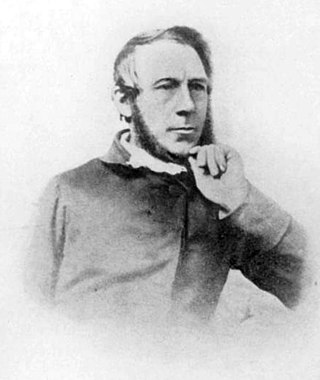Related Research Articles

Execution by firing squad, in the past sometimes called fusillading, is a method of capital punishment, particularly common in the military and in times of war. Some reasons for its use are that firearms are usually readily available and a gunshot to a vital organ, such as the brain or heart, most often will kill relatively quickly.

Waitangi Day, the national day of New Zealand, marks the anniversary of the initial signing—on 6 February 1840—of the Treaty of Waitangi. The Treaty of Waitangi was an agreement towards British sovereignty by representatives of the Crown and indigenous Māori chiefs, and so is regarded by many as the founding document of the nation.

The Völkner incident describes the execution of the German-born Protestant missionary Carl Sylvius Völkner in New Zealand in 1865 by an independent Māori judiciary, consisting of members of the Pai Mārire faith. It has come to be seen by historians as a major and consequential miscarriage of justice by the Government of New Zealand during the New Zealand Wars. The event led to the arrest and execution of several major chieftains, and the confiscation of 85,000 acres of Māori land.

The Battle of Chunuk Bair was a World War I battle fought between the Ottoman defenders and troops of the British Empire over control of the peak in August 1915. The capture of Chunuk Bair,, the secondary peak of the Sari Bair range, was one of the two objectives of the Battle of Sari Bair.

Capital punishment in New Zealand – the process of sentencing convicted offenders to death for the most serious crimes and carrying out that sentence, as ordered by a legal system – first appeared in a codified form when New Zealand became a British colony in 1840. It was first carried out with a public hanging in Victoria Street, Auckland in 1842, while the last execution occurred in 1957 at Mount Eden Prison, also in Auckland. In total, 85 people have been executed in New Zealand.

Compulsory military training (CMT), a form of conscription, was practised for males in New Zealand between 1909 and 1972. Military training in New Zealand has been voluntary before then and ever since.
Victor Manson Spencer was a volunteer from Invercargill, New Zealand who fought in the Otago Infantry Regiment of the New Zealand Division in World War I. Spencer was executed for desertion on 24 February 1918, despite later suggestions that he was severely traumatised by shellshock, having fought and survived several campaigns.
Private Harry T. Farr was a British soldier who was executed by firing squad during World War I for cowardice at the age of 25. Before the war, he lived in Kensington, London and joined the British Army in 1908. He served until 1912 and remained in the reserves until the outbreak of World War I. During the war, Farr served with the West Yorkshire Regiment on the Western Front. In 1915 and 1916 he was hospitalised multiple times for shell shock, the longest period being for five months. On 17 September 1916, Farr did not comply with an order to return to the front line, and was subsequently arrested and charged with cowardice. Unrepresented at his court martial, Farr was found guilty under section 4(7) of the Army Act 1881 and was sentenced to death. He was executed on 18 October 1916.

The Shot at Dawn Memorial is a monument at the National Memorial Arboretum near Alrewas, in Staffordshire, UK. It commemorates the 306 British Army and Commonwealth soldiers executed after courts-martial for desertion and other capital offences during World War I.
Private Thomas James Highgate was a British soldier during the First World War and the first British soldier to be convicted of desertion and executed by firing squad on the Western Front. He was born in Shoreham and worked as a farm labourer before joining the army in 1913 as a seaman. When the First World War began, he fought with the First Battalion of the Royal West Kents. Highgate was executed 35 days into the war, on 8 September 1914, after being found hiding in a farmhouse wearing civilian clothes. His death was made as public as possible and used as an example to other soldiers. Highgate's name was not included on the war memorial at Shoreham; from the late 1990s onwards, some local residents fought for his name to be added whilst others disagreed. Posthumous pardons for soldiers who had been executed, including Highgate, were announced in 2006.

The military history of New Zealand during World War I began in August 1914. When Britain declared war on Germany at the start of the First World War, the New Zealand government followed without hesitation, despite its geographic isolation and small population. It was believed at the time that any declaration of war by the United Kingdom automatically included New Zealand; and the Governor announced that New Zealand was at war with Germany from the steps of Parliament on 5 August.
Julian Putkowski is a British university teacher, military historian, researcher, and broadcaster. He has written extensively on military executions in World War I.

The Otago Infantry Regiment was a military unit that served within the New Zealand Expeditionary Force (NZEF) in World War I during the Gallipoli Campaign (1915) and on the Western Front (1916–1919). This Regiment and the Otago Mounted Rifles Regiment were composed mostly of men from Otago and Southland. The Otago Infantry Regiment represented the continuation of the Dunedin and Invercargill Militia Battalions formed in 1860.

The Department of Scientific and Industrial Research (DSIR) was a government science agency in New Zealand, founded in 1926 and broken into Crown Research Institutes in 1992.
John Braithwaite was a New Zealander who served in the First World War with the New Zealand Expeditionary Force. Supposedly a journalist before the war, in 1916 he was convicted of mutiny and executed by firing squad. He was posthumously pardoned in September 2000 through the passage of the Pardon for Soldiers of the Great War Act 2000.
Pardon for Soldiers of the Great War Act 2000 is statute law in New Zealand. The act sought to remove the blight on their character of five soldiers who were unjustly executed during World War I. One of the pardoned soldiers named in the act was from New Zealand's southern port town of Bluff and he is now honoured in the town's maritime museum. The Act was opposed by the ACT party, which argued it was inappropriate and an insult to the memory of everyone who fought in the war.
Rangiotu is a farming community in the Manawatū District and Manawatū-Whanganui region in New Zealand's central North Island.
References
- ↑ Pugsley, pp 104–121; Putkowski, pp 104–105; PRO: WO 213/10
- ↑ https://nzhistory.govt.nz/page/first-new-zealand-soldier-executed First New Zealand Soldier Executed
- ↑ Pugsley, pp 122–135; Putkowski, p. 117; PRO: WO 213/11
- ↑ "Tale of tunneler Sweeney highlights terrible darkness of war". The Sydney Morning Herald . 2014-04-24. Archived from the original on 2021-08-01.
- ↑ Pugsley, pp 136–146; Putkowski, pp 126–127; PRO: WO 90/6; Personal service record, Jack Braithwaite
- ↑ https://teara.govt.nz/en/biographies/3b44/braithwaite-john John Braithwaite Biography
- ↑ Pugsley, pp 167–184; Putkowski, pp 184–186; PRO: WO 213/16
- ↑ Pugsley, pp 185–205; Putkowski, pp 53–54; PRO: WO 213/20